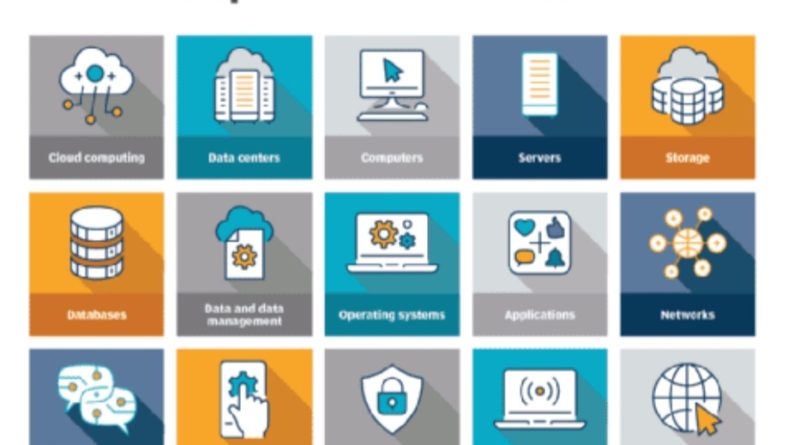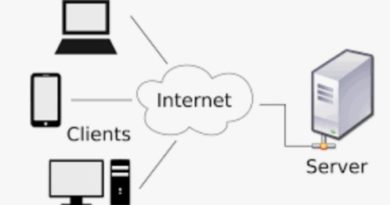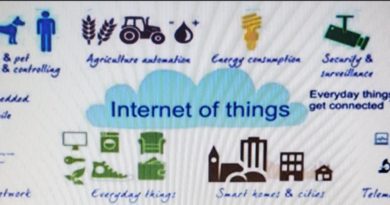IT GLOSSARY OF TERMS
This is a resource that will give you an understanding and knowledge on Information Technology (IT).
IT Self-Study
What is a server: It is a computer that provides data to other computers. It may serve data to systems on a local area network (LAN) or a wide area network (WAN) over the Internet. Many types of servers exist, including web servers, mail servers, and file servers. Each type runs software specific to the purpose of the server
What is a Network: Networking is a process of connecting two or more computer systems together for the purpose of sharing resources like files, folders, printers, etc.
Server virtualization is the masking of server resources, including the number and identity of individual physical servers, processors, and operating systems, from server users. The server administrator uses a software application to divide one physical server into multiple isolated virtual environments.
Disaster Recovery: It involves a set of policies, tools and procedures to enable the recovery or continuation of vital technology infrastructure and systems following a natural or human-induced disaster. Disaster recovery focuses on the IT or technology systems supporting critical business functions,[1] as opposed to business continuity, which involves keeping all essential aspects of a business functioning despite significant disruptive events. Disaster recovery can therefore be considered as a subset of business continuity
Backup Systems: It is the process of backing up the operating system, files and system-specific useful/essential data. Backup is a process in which the state, files and data of a computer system are duplicated to be used as a backup or data substitute when the primary system data is corrupted, deleted or lost.
NAS Systems vs. A SAN System:
Network-Attached Storage (NAS)
is a file-level data storage device attached to an TCP/IP network, usually Ethernet. It typically uses NFS or CIFS protocols, although other choices like HTTP are available.NAS appears to the operating system as a shared folder. Employees access files from the NAS like they do any other file on the network. NAS is LAN-dependent; if the LAN goes down so does the NAS. NAS is not typically as fast as block-based SAN, but high-speed LANs can overcome most performance and latency issues.
Storage Area Network (SAN) is a dedicated high-performance network for consolidated block-level storage. The network interconnects storage devices, switches, and hosts. High-end enterprise SANs may also include SAN directors for higher performance and efficient capacity usage.Servers connect to the SAN fabric using host bus adapters (HBAs). Servers identify the SAN as locally attached storage, so multiple servers can share a storage pool. SANs are not dependent on the LAN and relieves pressure on the local network by offloading data directly from attached servers.
Cloud Computing: The practice of using a network of remote servers hosted on the Internet to store, manage, and process data, rather than a local server or a personal computer.
Managed Services: It is the practice of outsourcing on a proactive basis certain processes and functions intended to improve operations and cut expenses.It is an alternative to the break/fix or on-demand outsourcing model where the service provider performs on-demand services and bills the customer only for the work done.
Unified Communications: (UC) is a business and marketing concept describing the integration of enterprise communication services such as instant messaging (chat), presence information, voice (including IP telephony), mobility features (including extension mobility and single number reach), audio, web & video conferencing, fixed-mobile convergence (FMC), desktop sharing, data sharing (including web connected electronic interactive whiteboards), call control and speech recognition with non-real-time communication services such as unified messaging (integrated voicemail, e-mail, SMS and fax). UC is not necessarily a single product, but a set of products that provides a consistent unified user interface and user experience across multiple devices and media types.
ERP: Enterprise resource planning (ERP) is the integrated management of main business processes, often in real-time and mediated by software and technology. ERP is usually referred to as a category of business management software — typically a suite of integrated applications—that an organization can use to collect, store, manage, and interpret data from these many business activities. ERP provides an integrated and continuously updated view of core business processes using common databases maintained by a database management system. ERP systems track business resources—cash, raw materials, production capacity—and the status of business commitments: orders, purchase orders, and payroll. The applications that make up the system share data across various departments (manufacturing, purchasing, sales, accounting, etc.) that provide the data. ERP facilitates information flow between all business functions and manages connections to outside stakeholders.
Business Intelligence: (BI) comprises the strategies and technologies used by enterprises for the data analysis of business information.BI technologies provide historical, current and predictive views of business operations. Common functions of business intelligence technologies include reporting, online analytical processing, analytics, data mining, process mining, complex event processing, business performance management, benchmarking, text mining, predictive analytics and prescriptive analytics. BI technologies can handle large amounts of structured and sometimes unstructured data to help identify, develop and otherwise create new strategic business opportunities. They aim to allow for the easy interpretation of these big data. Identifying new opportunities and implementing an effective strategy based on insights can provide businesses with a competitive market advantage and long-term stability.
Data Warehousing: A data warehouse (DW or DWH), also known as an enterprise data warehouse (EDW), is a system used for reporting and data analysis, and is considered a core component of business intelligence. DWs are central repositories of integrated data from one or more disparate sources. They store current and historical data in one single place[2] that are used for creating analytical reports for workers throughout the enterprise.
ETL Tools: Extract, Transform, Load (ETL) is the general procedure of copying data from one or more sources into a destination system which represents the data differently from the source(s).





